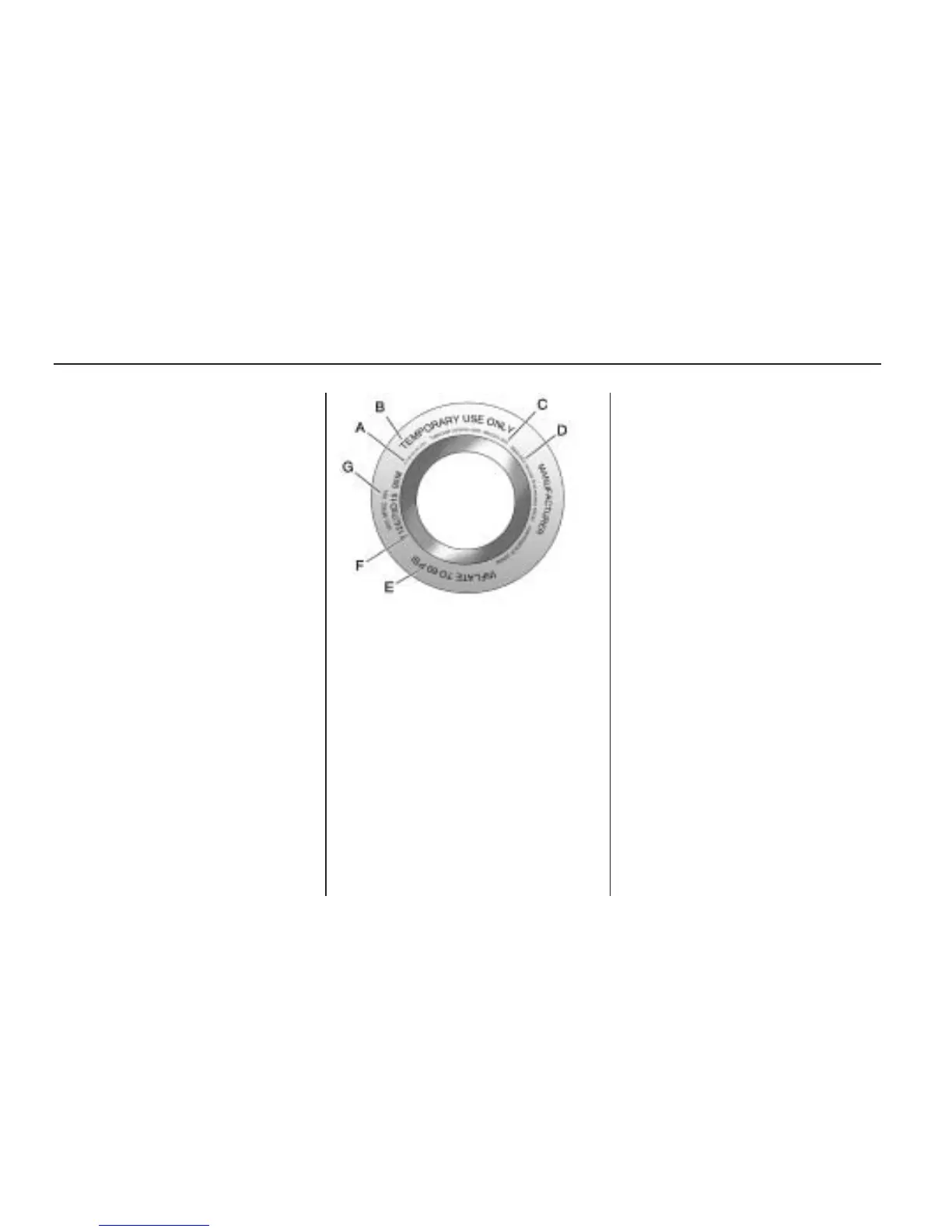The TIN shows the manufacturer
and plant code, tire size, and
date the tire was manufactured.
The TIN is molded onto both
sides of the tire, although only
one side may have the date of
manufacture.
(E) Tire Ply Material
: The type
of cord and number of plies in the
sidewall and under the tread.
(F) Uniform Tire Quality
Grading (UTQG)
: Tire
manufacturers are required to
grade tires based on three
performance factors: treadwear,
traction, and temperature
resistance. For more information
see Uniform Tire Quality
Grading on page 5-52.
(G) Maximum Cold Inflation
Load Limit
: Maximum load
that can be carried and the
maximum pressure needed
to support that load.
(A) Temporary Use Only
: The
compact spare tire or temporary
use tire has a tread life of
approximately 3,000 miles
(5 000 km) and should not be
driven at speeds over 65 mph
(105 km/h). The compact
spare tire is for emergency use
when a regular road tire has
lost air and gone flat. If
your vehicle has a compact
spare tire, see Compact Spare
Tire on page 5-83 and If a
Tire Goes Flat on page 5-56.
(B) Tire Ply Material
: The type
of cord and number of plies in the
sidewall and under the tread.
(C) Tire Identification Number
(TIN)
: The letters and numbers
following the DOT (Department
of Transportation) code is the
Tire Identification Number (TIN).
The TIN shows the manufacturer
and plant code, tire size, and
date the tire was manufactured.
The TIN is molded onto both
sides of the tire, although only
one side may have the date of
manufacture.
(D) Maximum Cold Inflation
Load Limit
: Maximum load that
can be carried and the maximum
pressure needed to support
that load.
(E) Tire Inflation
: The
temporary use tire or compact
spare tire should be inflated to
60 psi (420 kPa). For more
information on tire pressure and
inflation see Inflation - Tire
Pressure on page 5-42.
Compact Spare Tire Example
5-38 Service and Appearance Care

